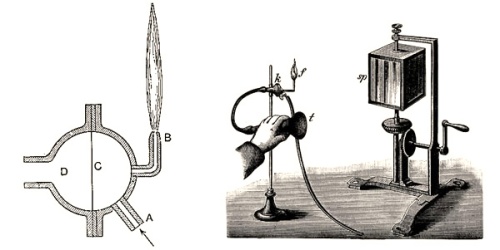The 19th century was a golden age for the invention of acoustical research instruments—tools for measuring audible frequencies or the speed of sound, or for making sound visible.
Advancements in instrument making and voice physiology paralleled advancements in sound recording, reproduction, and transmission. Apparatuses developed during that time included tuning forks, sirens, sonorous pipes, singing and sensitive flames, manometric capsules, and resonators.
This according to “1800–1900: Un secolo di strumenti per lo studio dell’acustica/1800–1900: A century of instruments for the study of acoustics” by Paolo Brenni, an essay included in L’acustica e suoi strumenti: La collezione dell’Istituto Tecnico Toscano/Acoustics and its instruments: The collection of the Istituto Tecnico Toscano (Firenze: Giunti, 2001, pp. 57–72).
Above, a manometric capsule; below, Professor Henry Higgins demonstrates a sensitive flame, using a rotating mirror for isolating the flame’s oscillations.



